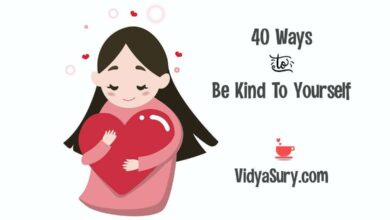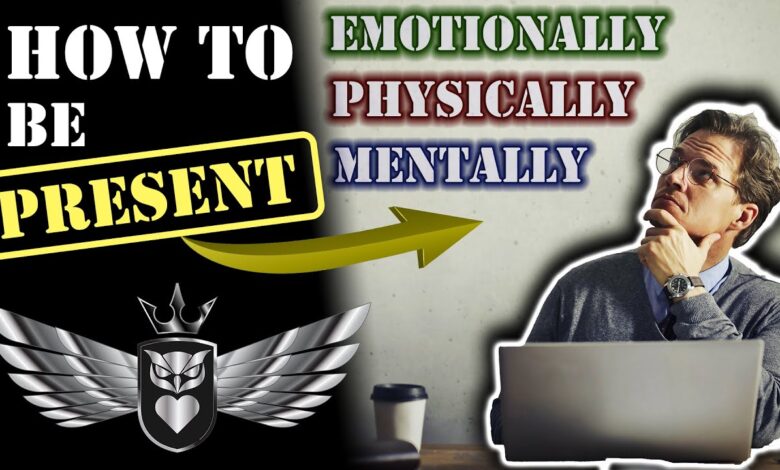
The Fine Art of Living in This Moment: Embracing Presence and Purpose
The fine art of living in this moment isn’t about escaping reality, it’s about actively choosing to engage with it. It’s about recognizing the preciousness of each passing second, the subtle beauty in the mundane, and the power that lies within our present experience.
This art form, however, isn’t always easy. We’re constantly bombarded with distractions, pulled towards the past or anxieties about the future, making it challenging to truly savor the now. But, with intentional practice, we can cultivate mindfulness, appreciate the simple joys, and ultimately discover a deeper sense of fulfillment in life.
This journey of cultivating presence involves embracing the impermanence of life, learning to let go of what no longer serves us, and finding meaning in the things that truly matter. It’s about nurturing gratitude for the blessings in our lives, fostering meaningful connections with others, and approaching the unknown with courage and resilience.
Ultimately, it’s about embracing the journey of self-discovery, growing through our experiences, and finding peace and purpose in the present moment.
Understanding the Present Moment
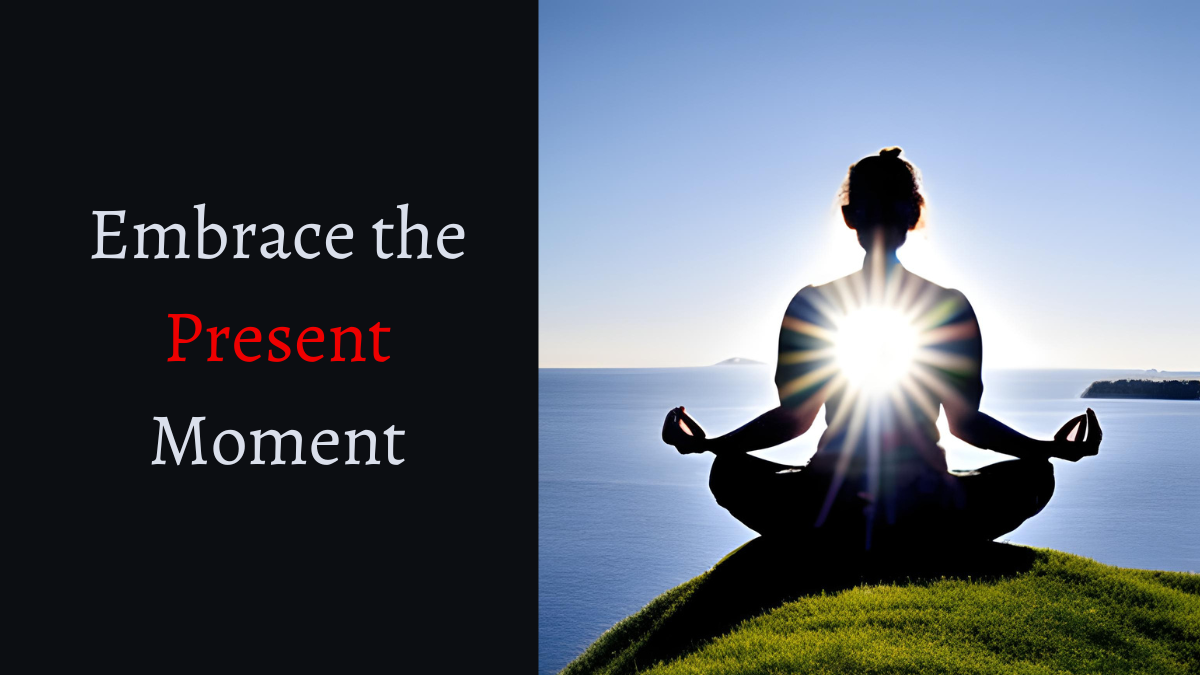
The art of living in the present moment is a journey of awareness and appreciation, a conscious choice to savor the richness of each passing instant. It’s about embracing the now, letting go of the past and future, and fully engaging with the experiences unfolding before us.
The Importance of Being Present
Living in the present moment is essential for a fulfilling and meaningful life. When we are fully present, we are able to:
- Experience life more deeply and authentically.
- Reduce stress and anxiety by focusing on the here and now.
- Enhance our relationships by being more attentive and engaged with others.
- Increase our creativity and productivity by tapping into our present-moment awareness.
- Cultivate a sense of gratitude and appreciation for the simple things in life.
Challenges of Living in the Present Moment
While the benefits of present-moment awareness are undeniable, it’s important to acknowledge the challenges we face in cultivating this state of being. Our minds are constantly bombarded with thoughts, worries, and distractions, pulling us away from the present.
Distractions That Pull Us Away from the Present
Distractions can be internal or external, and they often stem from:
- Rumination:Dwelling on past events or worrying about the future.
- Mind-wandering:Allowing our thoughts to drift away from the present moment.
- Technology:Smartphones, social media, and other devices can easily consume our attention.
- Multitasking:Trying to do multiple things at once can fragment our focus and prevent us from fully engaging with any one task.
- Sensory overload:The constant barrage of sights, sounds, and other stimuli can overwhelm our senses and make it difficult to be present.
Techniques for Cultivating Mindfulness and Awareness
Fortunately, there are many techniques we can use to cultivate mindfulness and bring our attention back to the present moment. These include:
- Meditation:Regular meditation practice can help train the mind to focus and become more aware of the present moment.
- Mindful breathing:Paying attention to the sensation of breath can help anchor us in the present moment.
- Body scan:Bringing awareness to different parts of the body can help us become more present in our physical sensations.
- Mindful walking:Paying attention to the sensations of walking, such as the movement of the feet and the feeling of the ground beneath them, can help us be more present in the moment.
- Mindful eating:Paying attention to the taste, texture, and aroma of our food can help us savor each bite and appreciate the experience of eating.
Appreciating the Simple Things
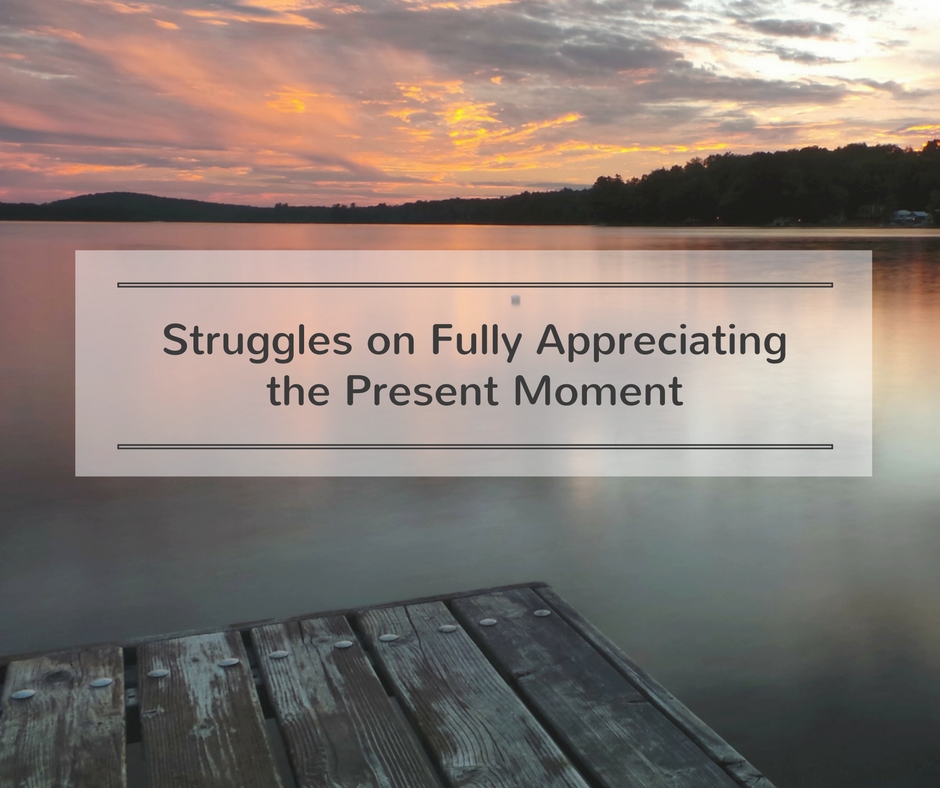
The art of living in the present moment often involves appreciating the small joys and pleasures that often go unnoticed in the whirlwind of daily life. We tend to focus on the bigger picture, the grand gestures, and the future aspirations, overlooking the simple beauty that surrounds us.
By shifting our attention to the present moment, we can discover a world of wonder in the everyday experiences that bring us joy and fulfillment.
Finding Beauty in Everyday Experiences
The beauty of the present moment lies in its simplicity. It is in the warmth of the sun on our skin, the gentle breeze rustling through the leaves, the aroma of freshly brewed coffee, the laughter of loved ones, and the quiet moments of solitude.
These simple experiences, often taken for granted, hold immense power to bring us joy and contentment. By paying attention to these moments, we cultivate a sense of gratitude and appreciation for the simple things in life.
Designing a Daily Routine for Appreciation
Incorporating moments of appreciation into our daily routine can significantly enhance our well-being. Here are a few ways to cultivate a mindset of gratitude:
- Start your day with a mindful morning routine.Take a few minutes to sit in silence, breathe deeply, and reflect on the things you are grateful for. This could be as simple as appreciating the warmth of your bed, the sound of birds singing, or the feeling of the sun on your face.
- Practice gratitude throughout the day.Take intentional breaks throughout the day to notice the small things that bring you joy. This could be a beautiful sunset, a delicious meal, or a kind gesture from a stranger.
- End your day with a reflective evening routine.Before going to bed, take a few minutes to reflect on the positive experiences of the day. This could be writing in a gratitude journal, meditating, or simply taking a few moments to appreciate the people and things in your life.
Activities that Bring Joy and Fulfillment
The activities that bring us joy and fulfillment are unique to each individual. However, there are some common themes that tend to resonate with most people:
- Spending time in nature.Connecting with nature can be incredibly restorative. Whether it’s taking a walk in the park, hiking in the mountains, or simply sitting in your backyard, spending time outdoors can help to reduce stress and boost your mood.
- Engaging in creative pursuits.Creativity is a powerful way to express ourselves and connect with our inner selves. Whether it’s painting, writing, playing music, or dancing, engaging in creative activities can bring a sense of joy and fulfillment.
- Connecting with loved ones.Spending time with people we care about is essential for our well-being. Whether it’s having a conversation with a friend, sharing a meal with family, or simply cuddling up with a loved one, meaningful connections bring us joy and a sense of belonging.
- Learning new things.The pursuit of knowledge can be incredibly rewarding. Whether it’s taking a class, reading a book, or simply exploring a new topic online, learning new things keeps our minds engaged and expands our horizons.
- Helping others.Acts of kindness and compassion can bring a sense of purpose and meaning to our lives. Whether it’s volunteering at a local charity, donating to a cause we care about, or simply offering a helping hand to someone in need, making a positive impact on the world can be deeply fulfilling.
Embracing Impermanence
Life is a constant dance of change, a continuous flow of moments that ebb and flow, rise and fall. To truly embrace the fine art of living in the present moment, we must acknowledge and accept the impermanence of all things.
This acceptance is not about resignation; it’s about understanding that change is the only constant, and that embracing this truth can lead to greater peace and contentment.
Understanding the Nature of Impermanence
Impermanence, often referred to as “anicca” in Buddhist philosophy, is the fundamental understanding that nothing is permanent. Everything in our world, from our physical bodies to our thoughts and emotions, is in a constant state of flux. This includes our relationships, our jobs, our possessions, and even our very identities.
The fine art of living in this moment is about appreciating the simple things, the little joys that make up our daily lives. But sometimes, we wonder if we’re missing something, if we should be taking extra steps to enhance our well-being.
This is where the question of supplementation comes in, a topic that experts often debate on experts debate should you supplement. Ultimately, the key is finding a balance, appreciating what we have while being open to possibilities that might enrich our present moment.
Understanding impermanence allows us to let go of the need to hold onto things, people, or situations that are inevitably going to change. It encourages us to appreciate the present moment, knowing that it won’t last forever.
Personal Reflections on Impermanence
The concept of impermanence has profoundly shaped my perspective on life. As a child, I was deeply attached to my toys and possessions, clinging to them with a fierce possessiveness. As I grew older, I witnessed the inevitable changes that life throws our way: the loss of loved ones, the ending of relationships, the shifting of priorities.
These experiences, while painful at times, taught me the invaluable lesson of impermanence. They helped me to understand that clinging to the past or fearing the future only diminishes the joy of the present moment.
Embracing Change for Greater Peace
Accepting the impermanence of life can be challenging, but it is a crucial step towards greater peace and contentment. When we resist change, we create unnecessary suffering. We hold onto things that are no longer serving us, clinging to the past or fearing the future.
By embracing change, we open ourselves up to new possibilities, new experiences, and new growth. We learn to appreciate the beauty of the present moment, knowing that it is a gift that won’t last forever.
Examples of Embracing Impermanence
There are many ways to embrace the impermanence of life. Here are a few examples:
- Practice mindfulness: By focusing on the present moment, we can learn to appreciate the fleeting nature of life and savor each experience. Mindfulness practices, such as meditation or deep breathing, can help us to become more aware of our thoughts, feelings, and sensations in the present moment.
- Cultivate gratitude: Focusing on the good things in our lives, no matter how small, can help us to appreciate the present moment and let go of the need to control the future. Expressing gratitude for the people, experiences, and opportunities in our lives can help us to find joy in the present moment.
- Let go of attachments: We are often attached to things, people, or situations that we believe will bring us happiness. However, these attachments can lead to suffering when things inevitably change. By learning to let go of attachments, we can open ourselves up to new possibilities and find greater peace and contentment.
Cultivating Gratitude
Gratitude is a powerful emotion that can transform our lives. It shifts our focus from what we lack to what we have, fostering a sense of contentment and well-being. By cultivating gratitude, we open ourselves to a more positive and fulfilling experience of life.
The Benefits of Practicing Gratitude
Practicing gratitude has numerous benefits for our physical, mental, and emotional health. Studies have shown that gratitude can:
- Boost happiness and life satisfaction.
- Reduce stress and anxiety.
- Improve sleep quality.
- Strengthen relationships.
- Increase resilience in the face of adversity.
- Promote physical health by lowering blood pressure and improving cardiovascular health.
Techniques for Cultivating a Grateful Heart
There are many ways to cultivate gratitude in our daily lives. Here are some techniques:
- Keep a gratitude journal:This involves writing down things you are grateful for each day. It can be as simple as listing three things you appreciate, or you can write more detailed reflections. The act of writing helps to solidify your gratitude and make it more tangible.
- Practice gratitude meditation:This involves focusing on feelings of gratitude during meditation. You can do this by thinking about things you are grateful for, or by using guided meditations that focus on gratitude.
- Express gratitude to others:Take the time to thank people for their kindness, support, and contributions to your life. This can be done through words, gestures, or even small acts of service.
- Focus on the positive:Make a conscious effort to notice and appreciate the good things in your life. This can involve paying attention to the beauty around you, the kindness of others, or even the simple pleasures of everyday life.
- Challenge negative thoughts:When negative thoughts arise, try to challenge them by focusing on things you are grateful for. This can help to shift your perspective and cultivate a more positive outlook.
Creating a Gratitude Journal
A gratitude journal is a powerful tool for cultivating gratitude. It provides a dedicated space to reflect on and record your appreciation for the good things in your life.
Steps to Create a Gratitude Journal:
- Choose a journal:Select a notebook or journal that you find aesthetically pleasing and inspiring. This will make the process of writing more enjoyable.
- Set a time to write:Dedicate a specific time each day to write in your journal. This could be before bed, after waking up, or during a quiet moment in your day.
- Start with a simple prompt:Begin by writing down three things you are grateful for. This could be anything from a delicious meal to a kind gesture from a friend.
- Expand your entries:As you become more comfortable with journaling, you can expand your entries to include more detailed reflections on your gratitude. You can write about specific events, people, or experiences that you appreciate.
- Be consistent:The key to cultivating gratitude through journaling is consistency. Make it a habit to write in your journal every day, even if it’s just for a few minutes.
Gratitude List
Creating a gratitude list is a great way to reflect on the things you are thankful for. It can be a simple list, or you can elaborate on each item.
Here is a sample gratitude list:
- My health and well-being
- My family and friends
- My home and shelter
- The food I eat
- The ability to learn and grow
- The beauty of nature
- The opportunity to make a difference in the world
- The love and support of my community
- The simple pleasures of life
The Art of Letting Go
Letting go is a crucial aspect of living in the present moment. It involves releasing negative thoughts, emotions, and experiences that hold us back from fully embracing the present. By learning to let go, we can cultivate a sense of peace, freedom, and well-being.
Techniques for Letting Go
Letting go can be challenging, but with practice, it becomes easier. Here are some techniques that can help:
- Mindfulness Meditation:This practice involves focusing on the present moment without judgment. By observing our thoughts and feelings without getting carried away by them, we can gain distance from negative emotions and choose to let them go.
- Journaling:Writing down our thoughts and feelings can help us process them and release their hold on us. It allows us to express ourselves without judgment and to gain clarity on what we need to let go of.
- Physical Activity:Engaging in physical activity, such as exercise or yoga, can help release endorphins and reduce stress levels. It provides an outlet for pent-up emotions and helps us to shift our focus away from negative thoughts.
- Creative Expression:Engaging in creative activities, such as painting, writing, or playing music, can be a powerful way to release emotions and express ourselves. It allows us to channel our feelings into something positive and constructive.
The Benefits of Letting Go
Letting go brings numerous benefits to our well-being:
- Reduced Stress and Anxiety:By releasing negative thoughts and emotions, we reduce the burden on our minds and bodies, leading to lower stress and anxiety levels.
- Improved Mood and Emotional Well-being:Letting go of negativity allows us to experience more joy, peace, and contentment. It frees us from the weight of the past and enables us to embrace the present with greater appreciation.
- Enhanced Relationships:Holding onto resentment, anger, or hurt can strain our relationships. By letting go of these negative feelings, we create space for forgiveness, compassion, and healthier connections.
- Increased Resilience:Letting go helps us to develop resilience, the ability to bounce back from challenges and setbacks. It teaches us to accept the impermanence of life and to move forward with grace and strength.
The Role of Forgiveness
Forgiveness is an essential part of letting go. It involves releasing the resentment and anger we hold towards ourselves or others. By forgiving, we break free from the cycle of negativity and create space for healing and growth.
Finding Meaning and Purpose: The Fine Art Of Living In This Moment
Finding meaning and purpose in life is a fundamental human desire. It’s about understanding our place in the world and feeling a sense of fulfillment and direction. When we have a sense of purpose, we feel more motivated, engaged, and satisfied with our lives.
Identifying Values and Priorities
Our values are the core beliefs that guide our decisions and actions. They are the things that we consider most important in life. Identifying our values helps us understand what truly matters to us and can be a crucial step in finding our purpose.
Here are some questions to help you identify your values:
- What are the qualities that you admire in others?
- What are your deepest passions and interests?
- What do you believe makes life worth living?
- What are you willing to fight for?
- What kind of legacy do you want to leave behind?
Once you’ve identified your values, you can start to think about how you can live a life that is aligned with them.
Living in the present moment is about savoring each bite, each experience. But it’s easy to get caught up in mindless eating, which can lead to overconsumption. If you’re not sure if you’re making portion size mistakes, check out this article on 7 portion size mistakes you’re probably making.
By being mindful of what you eat and how much, you can truly appreciate the fine art of living in this moment.
Examples of Finding Meaning
People find meaning in their lives in many different ways. Here are a few examples:
- Volunteering:Many people find meaning in giving back to their communities. Volunteering can provide a sense of purpose and connection, and it can also be a great way to learn new skills and meet new people.
- Creative pursuits:Whether it’s writing, painting, playing music, or dancing, creative pursuits can be a powerful source of meaning and fulfillment. They allow us to express ourselves and connect with our inner selves.
- Building relationships:Strong relationships with family, friends, and loved ones are essential for a meaningful life. These relationships provide us with love, support, and a sense of belonging.
- Making a difference:Some people find meaning in working towards a cause that they believe in. This could involve advocating for social justice, protecting the environment, or promoting peace.
Purpose and the Present Moment
Living in the present moment is crucial for finding and experiencing our purpose. When we are constantly dwelling on the past or worrying about the future, we miss out on the opportunities and experiences that are happening right now.
“The only way to do great work is to love what you do.”
Steve Jobs
When we are present, we are more likely to notice the things that are meaningful to us and to appreciate the beauty and wonder of life. This allows us to connect with our purpose in a more authentic and fulfilling way.
Connecting with Others
The art of living in the present moment extends beyond our individual experiences and encompasses the profound connections we forge with others. These meaningful relationships, woven into the fabric of our lives, enrich our existence, providing a sense of belonging, support, and shared joy.
Cultivating these connections is an integral part of living a fulfilling life, fostering a sense of community and purpose.
The Significance of Meaningful Connections, The fine art of living in this moment
Meaningful connections are essential for our well-being and contribute significantly to a fulfilling life. They provide us with a sense of belonging, support, and shared experiences. When we connect with others on a deeper level, we feel understood, valued, and loved.
This sense of connection can alleviate feelings of loneliness and isolation, fostering a sense of purpose and meaning in our lives.
Building Strong Relationships and Fostering Community
Building strong relationships and fostering a sense of community requires conscious effort and a commitment to meaningful engagement. Here are some practical tips to nurture these connections:
Making an Effort to Connect
- Active Listening:Truly listen to others when they speak, showing genuine interest in their thoughts and feelings. This involves paying attention, asking clarifying questions, and reflecting back on what you’ve heard.
- Empathy and Compassion:Cultivating empathy allows us to understand and share the feelings of others, fostering a sense of connection and understanding. Compassion, on the other hand, motivates us to act in ways that alleviate suffering and promote well-being in others.
- Shared Activities and Interests:Engaging in activities we enjoy with others creates opportunities for connection and shared experiences. This could involve joining clubs, participating in sports, volunteering, or simply spending time together in nature.
- Regular Communication:Maintaining regular communication with loved ones, whether through phone calls, text messages, or in-person visits, helps strengthen bonds and keep connections alive.
Fostering Community
- Volunteer Work:Volunteering for a cause we care about can bring us together with like-minded individuals, fostering a sense of community and purpose.
- Joining Local Groups:Joining local groups based on shared interests, such as book clubs, hiking groups, or art classes, provides opportunities to meet new people and build connections.
- Supporting Local Businesses:Patronizing local businesses not only strengthens the local economy but also fosters a sense of community and belonging.
Embracing the Unknown
Life is an unpredictable journey filled with twists and turns, often leading us to destinations we never anticipated. Embracing the unknown, with its inherent uncertainty and change, is not just an act of courage, but a vital aspect of living a fulfilling life.
It allows us to navigate the unpredictable with grace and resilience, discovering new possibilities and expanding our horizons.
The Importance of Embracing Uncertainty and Change
Uncertainty and change are constants in our lives, and resisting them can lead to frustration and stagnation. Instead of fearing the unknown, we can cultivate a mindset of acceptance and curiosity. Embracing uncertainty allows us to approach challenges with an open mind, seeking opportunities for growth and learning.
Change, on the other hand, can be a catalyst for personal evolution, pushing us out of our comfort zones and into new experiences that enrich our lives.
Sometimes, the fine art of living in this moment means letting go of the need to perfectly plan every detail. It’s okay to take a break from the rigid structure of meal prepping and embrace a little spontaneity. If you’re feeling stuck in a rut, check out 6 proven ways to get out of a meal prep plateau for some fresh ideas.
Ultimately, the key is to find a balance between planning and freedom, allowing yourself to truly savor the present moment, even when it comes to food.
Approaching Challenges with Courage and Resilience
When faced with unexpected challenges, it’s natural to feel a sense of fear or anxiety. However, embracing the unknown empowers us to approach these situations with courage and resilience.
- Reframing Challenges:Instead of viewing challenges as obstacles, consider them opportunities for growth. Ask yourself: What can I learn from this situation? How can I use this experience to become stronger?
- Developing a Growth Mindset:A growth mindset believes that our abilities can be developed through effort and persistence. This mindset allows us to embrace challenges as opportunities for learning and improvement, rather than fearing failure.
- Building Resilience:Resilience is the ability to bounce back from adversity. It involves developing coping mechanisms, seeking support from others, and learning from past experiences. By building resilience, we can navigate challenges with greater strength and adaptability.
Adaptability in Navigating Life’s Unexpected Turns
Adaptability is crucial in navigating life’s unpredictable turns. It involves the ability to adjust to new situations, embrace change, and learn from our experiences.
- Flexibility and Openness:Adaptable individuals are flexible in their thinking and open to new possibilities. They are willing to consider different perspectives and adjust their plans based on changing circumstances.
- Problem-Solving Skills:Adaptability often involves finding creative solutions to unexpected challenges. Developing problem-solving skills allows us to navigate difficult situations with greater ease.
- Continuous Learning:Adaptability is an ongoing process. It requires a willingness to learn new things, embrace new technologies, and stay informed about the world around us.
Managing Anxiety and Finding Peace in the Unknown
The unknown can trigger anxiety, as we naturally crave certainty and control. However, there are techniques we can employ to manage anxiety and find peace in the face of uncertainty.
- Mindfulness:Mindfulness involves focusing on the present moment without judgment. By practicing mindfulness, we can become more aware of our thoughts and feelings, allowing us to manage anxiety more effectively.
- Acceptance:Accepting the unknown, rather than resisting it, can reduce anxiety. Remind yourself that you are not in control of everything, and that uncertainty is a natural part of life.
- Gratitude:Focusing on the positive aspects of our lives can help shift our perspective and reduce anxiety. Practicing gratitude can remind us of the good things we have, even in the face of uncertainty.
The Journey of Self-Discovery
The journey of self-discovery is a lifelong pursuit, an ongoing process of exploration and growth that allows us to understand who we are, what we value, and what we want to achieve in life. It’s a continuous process of learning, evolving, and becoming the best version of ourselves.
Learning from Experiences and Evolving
Every experience we have, whether positive or negative, offers valuable lessons that can help us grow and evolve. We learn from our successes, understanding what works and what doesn’t, and from our failures, gaining insights into our weaknesses and areas for improvement.
For instance, a challenging experience at work might teach us about resilience, problem-solving, and communication skills. A difficult relationship might help us learn about boundaries, self-love, and the importance of healthy communication. To learn from our experiences, we need to be willing to reflect on them objectively.
Ask yourself: * What did I learn from this experience?
- What did I do well?
- What could I have done differently?
- What are my takeaways for the future?
The Importance of Self-Compassion and Acceptance
Self-discovery is not always a smooth or comfortable process. We may encounter moments of self-doubt, uncertainty, and even disappointment as we learn more about ourselves. This is where self-compassion and acceptance become crucial.
“Self-compassion means understanding that you are human and that everyone makes mistakes. It means being kind to yourself when you are struggling, and not judging yourself harshly.”
Kristin Neff
Self-compassion allows us to treat ourselves with the same kindness and understanding that we would offer to a loved one. It enables us to acknowledge our imperfections and flaws without letting them define us. Acceptance is about acknowledging our strengths and weaknesses, our fears and aspirations, and embracing them all as part of who we are.
Cultivating a Growth Mindset and Embracing Lifelong Learning
A growth mindset is essential for continuous self-discovery and growth. This mindset views challenges as opportunities for learning and growth, rather than as threats to our self-worth. It encourages us to embrace lifelong learning, to be open to new experiences and perspectives, and to continuously seek knowledge and development.
Here are some tips for cultivating a growth mindset:* Embrace challenges:See challenges as opportunities for learning and growth.
Focus on the process Don’t be afraid to make mistakes. Learn from them and keep moving forward.
Seek out feedback Ask for feedback from others and use it to improve.
Be open to new experiences Step outside of your comfort zone and try new things.
Never stop learning Read books, attend workshops, and take classes to continue expanding your knowledge and skills.
Final Wrap-Up
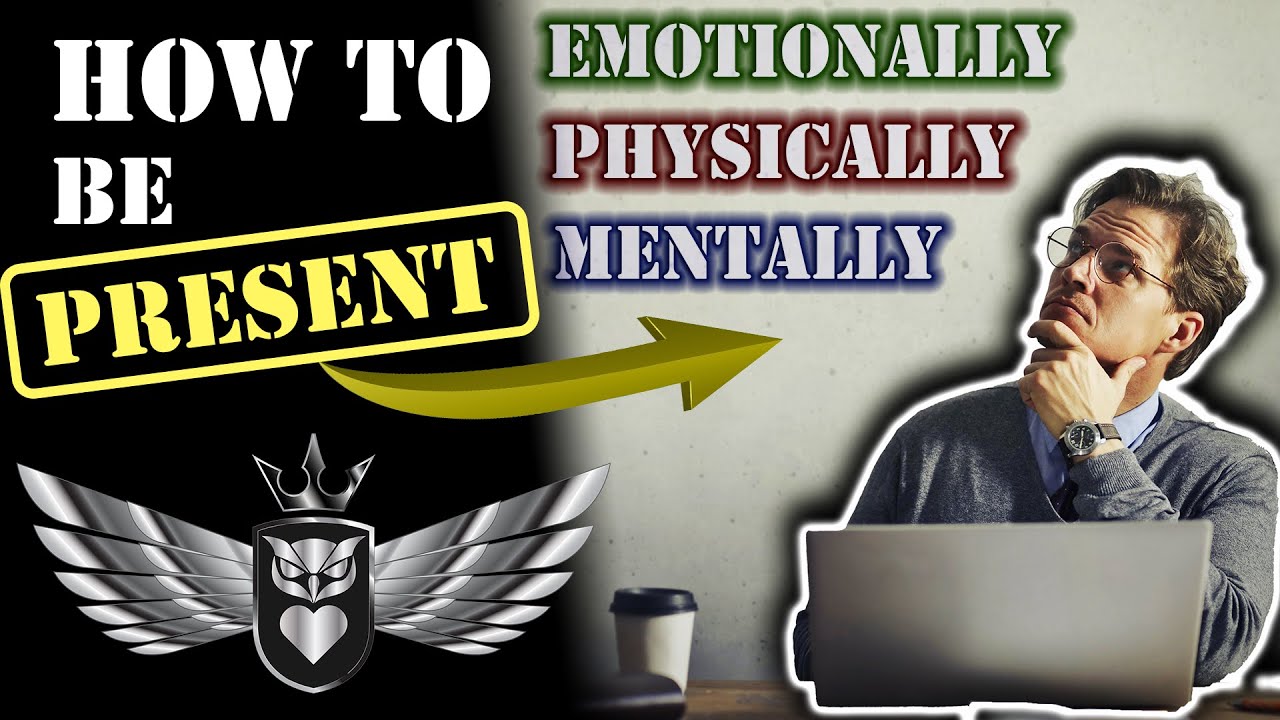
Living in the present moment isn’t a destination, it’s a continuous practice. It’s a commitment to being fully present in each breath, each interaction, and each experience. As we cultivate this awareness, we unlock a deeper appreciation for the beauty and wonder of life, and discover a sense of contentment that transcends the fleeting nature of our thoughts and emotions.
So, let’s embark on this journey together, one mindful breath at a time, and discover the art of truly living in this moment.

